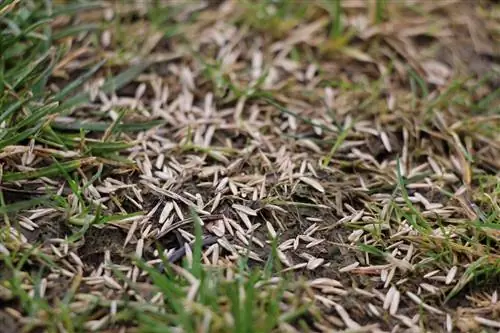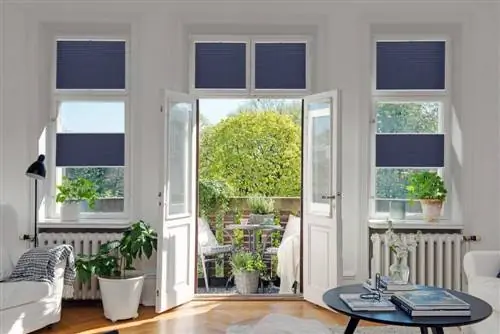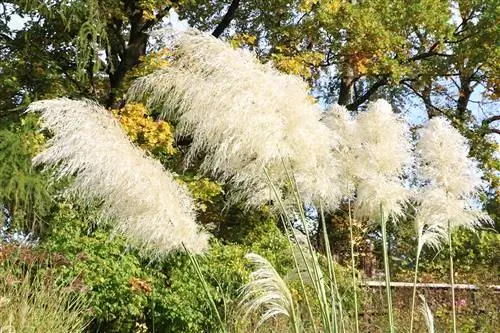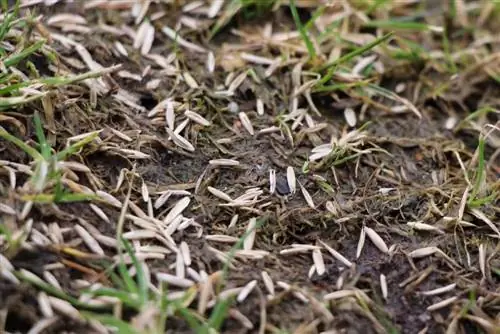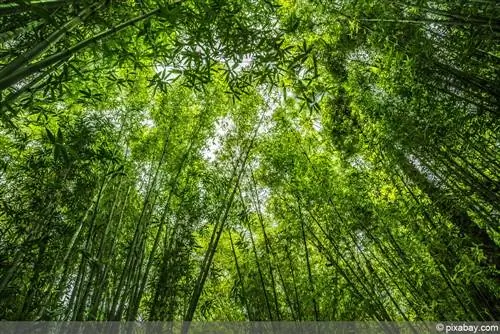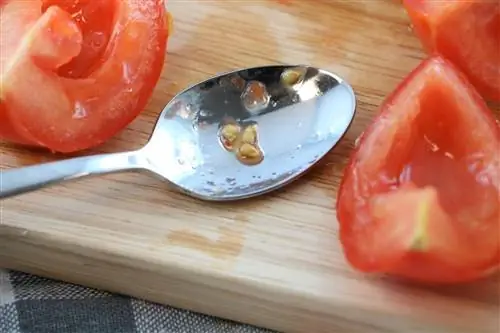- Author admin [email protected].
- Public 2023-12-17 03:39.
- Last modified 2025-06-01 06:48.
Lawn seed mixtures in the right composition lay the foundation for your success in lawn care.
Considerations before buying lawn seeds
It is worth carrying out a short location analysis and answering the question of whether the lawn is predominantly in the shade or in the sun, or perhaps more in partial shade. The question that would also need to be answered is whether the planned lawn is in dry or wet locations.
Tip:
Perform this analysis for each section of the planned lawn area.
At the same time, the question of the purpose of the lawn would also be important: Should it be a playground for the kids or, above all, a beautiful feast for the eyes or a place to set up a garden lounger and enjoy the sun?
What's growing there?
Every lawn seed mix (RSM) is different and yet there are some seed varieties that can be found in almost every pack. The proportion of different grass seeds determines whether the lawn is, for example, wear-resistant or frost-resistant. One of the most common lawn seeds is meadow bluegrass (Poa pratensis), a perennial plant that can grow up to 60 cm high and is resistant to treading. Perennial ryegrass (Lolium perenne) is another popular plant for RSM. This is a hardy type of grass that can also grow up to 60 cm high. This grass is quite sturdy and recovers quite quickly after stress.
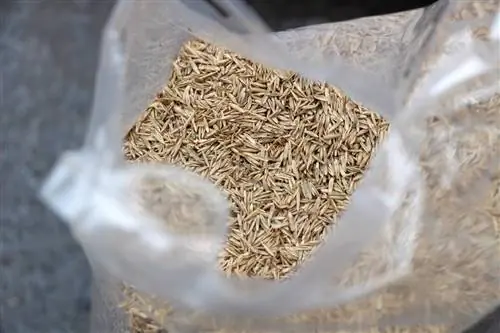
The third important component of many RSMs are different forms of red fescue (Festuca). These grasses are perennial and make the lawn look particularly even. Läger bluegrass (Poa supina) is a perennial plant that thrives in shady areas. Another type of grass for shade lawns is bluegrass (Poa nemoralis).
Lawn for running around and playing: play and sports turf
Play or sports turf is one of the most common forms of turf. This lawn consists of grass varieties that are particularly sturdy and robust.
- Typical for a play turf mixture is a high proportion of perennial ryegrass seeds (up to 50%).
- As a rule, not one but several breeding forms are used, such as Barrage, Mondiall or Shagall.
- The RSM also consists of the grass seeds from meadow bluegrass, the proportion of which can be between 10% and 30%.
- The popular varieties here include Compact or Liberator.
In general, the more resilient the area is, the higher the proportion of Poa grass seeds. Thirdly, an RSM for playing and sports turf includes red fescue species in a proportion of around 30%. RSM for sports and play turf are particularly suitable for sunny locations. If the planned play lawn is in the shade or partial shade, then it is worth looking for an RSM with a high proportion of Läger bluegrass lawn seeds. In addition to regular mowing (once a week or every 10 days), sports and play turf requires fertilization and irrigation during drought.
Beautiful utility lawn: the ornamental lawn
This lawn is still called English lawn. The ornamental lawn impresses with its dense and fine turf. Although this lawn is sturdy, it is not particularly resilient. Such lawns require a relatively high level of care, including mowing every 5 to 7 days and scarifying (in spring and autumn). The ornamental lawn can tolerate a fairly deep cut. Grass seeds of red fescue varieties are best suited for ornamental lawns. These can make up up to 80% of the RSM, including cultivated forms such as 'Bargreen', 'Samanta' or 'Bossanova'. Perennial ryegrass, which is also often represented in the RSM for ornamental lawns, gives the lawn some traction.
Green despite lack of light: shaded lawn
There are also special RSM for shady locations:
- The proportion of grove bluegrass and Läger bluegrass is particularly high in these mixtures.
- Grass seeds from specially bred forms of meadow bluegrass, including 'Julius' or 'Linare', can also be used in this mixture.
- The following red fescue varieties are also suitable for shady or semi-shady locations: 'Wrangler', 'Aida' or 'Mustang'.
The mixtures for shade lawns are used, for example, to green areas under deciduous trees. The shade lawn looks effective, but is usually less sturdy than the playing lawn.
Grass seeds - special features in dry and wet locations
- For an ornamental lawn in wet areas, an RSM with an equal proportion of red fescue varieties 'Olivia', 'Bornito' and 'Rapid' is suitable.
- Lawn seeds from red fescue species 'Bach' or 'Livista' can also be used.
- For dry locations, an RSM with up to 60% grass seeds of the 'Bornito' variety is recommended.
- The lawn seeds 'Bach', 'Rapid' or 'Olivia' can be added in equal proportions.
Garden meadow - beautiful to look at
Flower meadow in your own garden - that's a real gem.
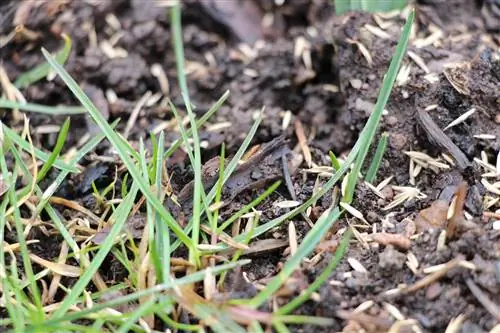
A component of many mixtures are:
- Seeds of satin flower, marigold, sweet silverwort and carnations,
- usually also lawn seeds of meadow bluegrass, perennial ryegrass and red fescue varieties.
These provide pleasant greenery between the flowers. This type of lawn does not need to be mowed or rarely mowed. The plus point of this lawn is its beautiful, colorful look. The minus point - this lawn is not suitable as a practical lawn. A tip: only create a part of the planned lawn area as a meadow, e.g. in the front garden.
Lawn seeds at a glance
- Meadow bluegrass: hard-wearing, tolerates drought quite well;
- Perennial ryegrass: tread-resistant, robust;
- Red fescue: resilient, ensures particularly dense turf;
- Läger bluegrass: robust, tolerates shade;
- Ocean meadow grass: less sturdy, suitable for shady areas.
What you need to know about lawn and grass seeds soon
A lawn can be sown in a wide variety of areas: in gardens, playgrounds, campsites, parks, etc..
People now often use rolled turf, which is relatively easy to handle, as it produces visible results after just a short time. However, in this context it can sometimes happen that parts of the turf rolls do not fully adhere to the ground because perhaps not enough moisture has been absorbed and brown, unsightly areas quickly appear in the green.
In order to counteract this mishap in advance, many hobby gardeners prefer to sow real lawn. If you look around on the Internet or in a gardening store, you will find that there are lawn seeds of all kinds and blade thicknesses. Not all lawns are the same! So the hobby gardener should, if possible, be clear in good time about what requirements will be placed on the future grass area.

